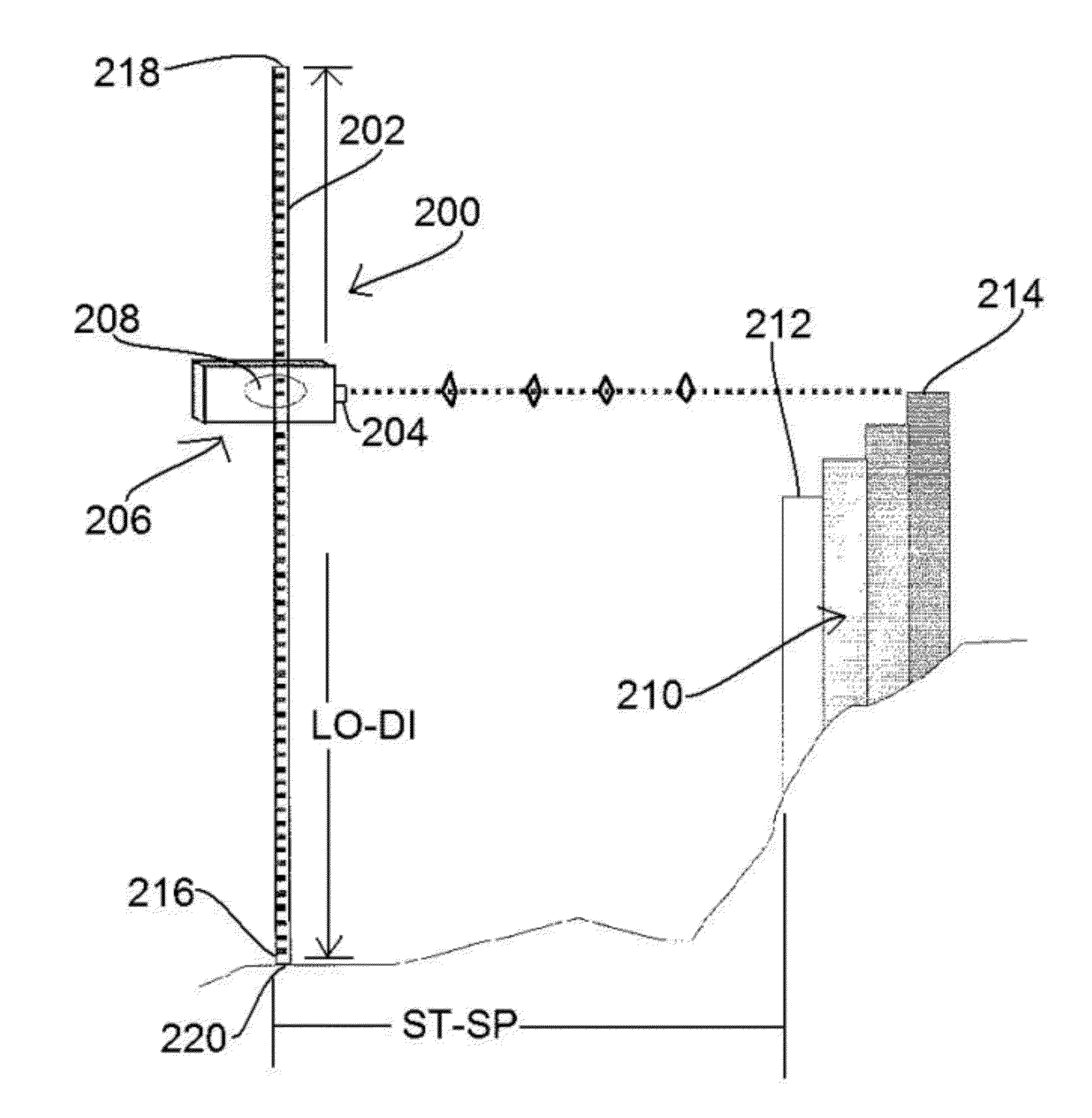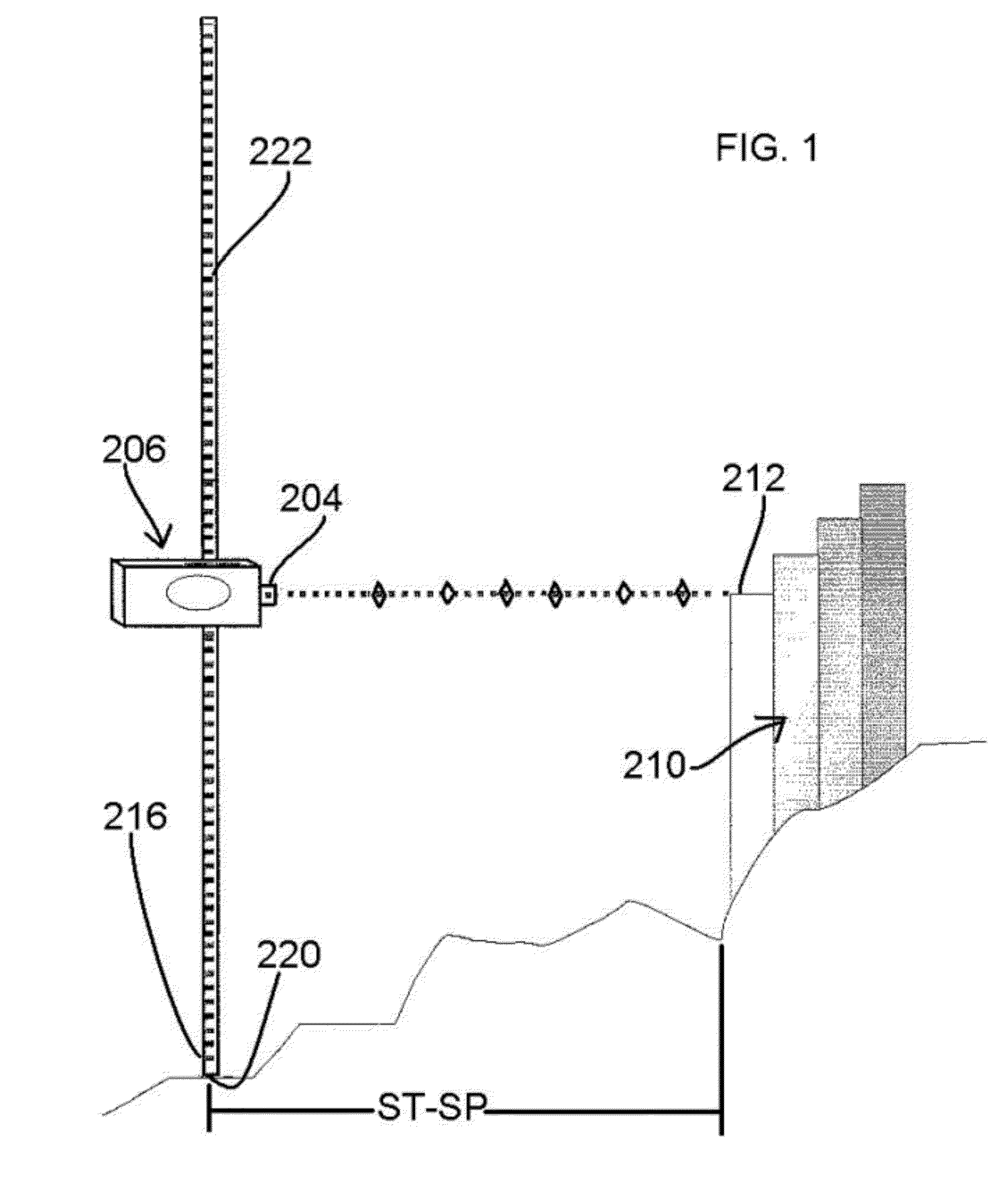System for rapid assessment of grade variations and method for using a system
a technology of grade variation and system, applied in the field of systems, can solve the problems of inability to fully appreciate the expertise needed for proper landscape construction, inability to use traditional survey equipment for estimating or calculating grade variation, and inability to meet the functional-concept plan phase of landscape construction projects. to achieve the effect of minimizing the impact on job-site operations
- Summary
- Abstract
- Description
- Claims
- Application Information
AI Technical Summary
Benefits of technology
Problems solved by technology
Method used
Image
Examples
Embodiment Construction
[0028]The present invention provides a system that provides information to assess a profile characteristic of a surface. Particular details of a kit version of the system of the present invention will be provided herein but, initially, an overview of the inventive system will be provided with reference to FIGS. 1 and 2, wherein a core system is illustrated. As seen in FIG. 1, which is a side elevational schematic view of the core system of the present invention, the core system, hereinafter designated as the core system 200, comprises a reference component in the form of a pole 202, a first target kickoff device in the form of a scope 204, a follow-on positioner in the form of a movable bracket 206, a data interplay device in the form of a chip 208, and other components that will be described hereinafter. The core system 200 is operable to provide information to assess a profile characteristic of a surface such as, as exemplarily illustrated in FIG. 1, a surface formed by a pluralit...
PUM
 Login to View More
Login to View More Abstract
Description
Claims
Application Information
 Login to View More
Login to View More - R&D
- Intellectual Property
- Life Sciences
- Materials
- Tech Scout
- Unparalleled Data Quality
- Higher Quality Content
- 60% Fewer Hallucinations
Browse by: Latest US Patents, China's latest patents, Technical Efficacy Thesaurus, Application Domain, Technology Topic, Popular Technical Reports.
© 2025 PatSnap. All rights reserved.Legal|Privacy policy|Modern Slavery Act Transparency Statement|Sitemap|About US| Contact US: help@patsnap.com



